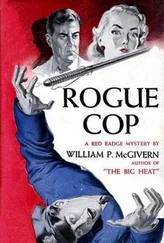Early the next morning Selby drove Shana into East Chester. Brett had asked them to come to her office before court convened; she needed the time to prepare Shana for Dr. Clemens’s probable inferences and conclusions.
But when they arrived Brett’s secretary told Selby there was a call for him from Senator Dixon Lester’s office in Washington. He took it in Brett’s reception room.
“Mr. Selby? Mr. Harry Selby? I’m Victoria Kim, Senator Lester’s staff coordinator. Do you have a moment to talk, Mr. Selby?” Her voice was full of energy, and flat with an unmistakable midwestern accent. Without waiting for his answer she said, “We’ve been monitoring the Earl Thomson trial as a matter of course, Mr. Selby. The senator’s committee has an ongoing investigation that includes George Thomson.”
“Yes, I’ve read about that.”
“Our interest in the trial was routine until yesterday when the defense introduced the transcript of the Jonas Selby court-martial. That shifted the emphasis from a local defense of Earl Thomson to a personal attack against you and your late father. I sent off a record of that testimony by jet courier to Senator Lester last night. The senator’s in Belgium presently. He called later to ask if you’d meet with him and discuss this development.”
“What ‘development’? I’m not sure I understand—”
“Has the defense offered you any inducement to drop the charges?”
“You mean some kind of bribe, a payoff?”
“Mr. Selby” — her voice sharpened with impatience — “I can make the eleven a.m. shuttle flight to Philadelphia. We have a suite at the Hamilton on the Fairmount Parkway. Do you know the Hamilton?”
“Yes.”
“Would it be possible for you to meet me there, about twelve-thirty this afternoon?”
“Miss Kim, I’m on my way to court for the morning’s hearings. I didn’t know anything about the committee’s interest in this trial or in my father’s court-martial. I was never able to get a copy of that transcript myself, as you may know. But the defense had no trouble getting it, and it seems you didn’t either.”
“I’m sorry if I’ve caught you at a bad time, Mr. Selby. I can’t discuss this on the phone, but I do urge you to cooperate. If the Hamilton isn’t convenient, I’ll meet anywhere you suggest.”
“No, the Hamilton’s fine.” Selby looked at his watch, then said, “Miss Kim, I need help. I’m willing to trade for it. If you understand and agree to that, I’ll see you around twelve-thirty.”
“Can you give me an idea what you’d have to trade, Mr. Selby?”
“I’ll bring it with me.”
After hanging up, he returned to Brett’s office and explained that he was driving over to Philadelphia but would try to be back as soon as possible after his meeting with the senator’s assistant. He gave Shana a kiss, nodded to Brett and headed for the elevators.
When court convened at ten o’clock, Counselor Davic addressed this question to the defense expert witness, Dr. Leslie Clemens.
“In your monograph, Doctor, which appeared last February in the Psychiatric Review, you used the terms ‘victim-signal’ and ‘victim-language.’ You also stated that in assault and rape cases, some victims are, in fact, crying out not for help but for abuse and humiliation. Would you explain these concepts more fully to the court, Dr. Clemens?”
“I’ll try. Studies of sexual pathology contain case histories characterized by these so-called victim-signals. In my article I was referring to body language and facial expressions, combined with certain clothing and terrain by which women advertise their availability as willing partners in unconventional erotic activities.”
To the intent jury and spectators, Dr. Leslie Clemens was drawing — under Davic’s questioning — a portrait of a specific class of female with whom the plaintiff, Shana Selby, might logically be identified.
“At first glance,” the doctor continued, “the signals may seem artless or even unconscious, but the literature of abnormal sexual tendencies, not to mention plain commonsense, tell us these advertisements, these sexual alerts are more often than not deliberately and cleverly planned.”
Dr. Clemens adjusted his cuffs and shifted his position on the witness stand to more effectively keep in view the jurors. “I have examined Miss Selby on three separate occasions. Each interview lasted an hour or more. I’d like to state that my judgments fall only within the parameters of probability, but my conclusions are supported by numerous accounts of sexual dysfunction that I am familiar with as a physician and which, in certain instances, I myself have authored...”
Tall and slender with short brown hair, graying in patches above rather knobby ears, Dr. Clemens, except for a head somewhat larger below those ears than above — cheekbones and jaw more prominent than temples and forehead — was handsome, with pleasant, if somewhat formal manners.
He went on to explain that the death of Shana’s mother, coinciding with Shana’s own onset of adolescence, and burgeoning womanhood, had surely been a traumatizing blow to the young girl... A causal relationship was very common in such situations. When a mother’s death occurred at the time of a daughter’s passage into sexual maturity, that new sense of life that otherwise might be so welcome became a guilty burden. A kind of rebuke to the dead mother, causing and reinforcing feelings of responsibility for her death. Such daughters tended to feel they had stolen this precious gift, the power to conceive and nurture life, from the departed mother. Now Shana Selby had experienced her first menstrual period just one month after her mother’s death. Studies of sexual disorders ranged extensively over this specific subject — the theft-association between the approach of menses and the death of a maternal parent. In such situations it would be unlikely that a daughter could enter into sexual relationships in a normal manner, since a pleasurable experience might be an unbearably guilty reminder, to her, of what she had presumably stolen... Such bruised psyches tended to take refuge from their sexual desires — which they often found punitively keen and insatiable — by retreating into emotional connections with idealized, unavailable figures — or into other fantasy worlds where their sexual drives might be internalized. But at other times such damaged young females might deliberately place themselves in jeopardy situations and send out victim-signals to alert males to their presence, availability, thereby provoking attention, aggression, and even sexual attacks. This way they could at once satisfy and be punished for their sexual drives, which at the onset of menses would be straining powerfully. They might well encourage a chance male to molest them, to abuse and assault them, even to commit rape on them but — crucial to their simultaneous need for a virginal self-image — they would insist that they had been forced into those acts against their wills.
At this point Davic asked Clemens to be more specific about the victim-signals.
The vocabulary of this system of communications, Dr. Clemens said, was clear and extensive, although it couldn’t always be interpreted accurately, especially by understandably protective relatives and parents.
The doctor commenced to tick them off on his fingers... jeans, tight, constricting jeans were obvious. Belts made of leather and ropes and chains were another, pulled painfully tight across creased and sucked-in stomachs. Wedged soles that made running (flight) impossible, foot gear with thongs and straps binding ankles and calves in painful cincture, all were potential “advisers” to the stalking male, signaled a willingness to participate in a kind of bondage. Any female who permitted herself to be tied up and gagged — no easy matter without at least a certain unconscious cooperation or submission from the so-called victim — was very possibly signaling her readiness to accept not only sadistic sex but other humiliating punishment that her, in effect, invited guest might want to inflict...
Читать дальше

![Уильям Макгиверн - Завтра опять неизвестность [английский и русский параллельные тексты]](/books/35168/uilyam-makgivern-zavtra-opyat-neizvestnost-angli-thumb.webp)









